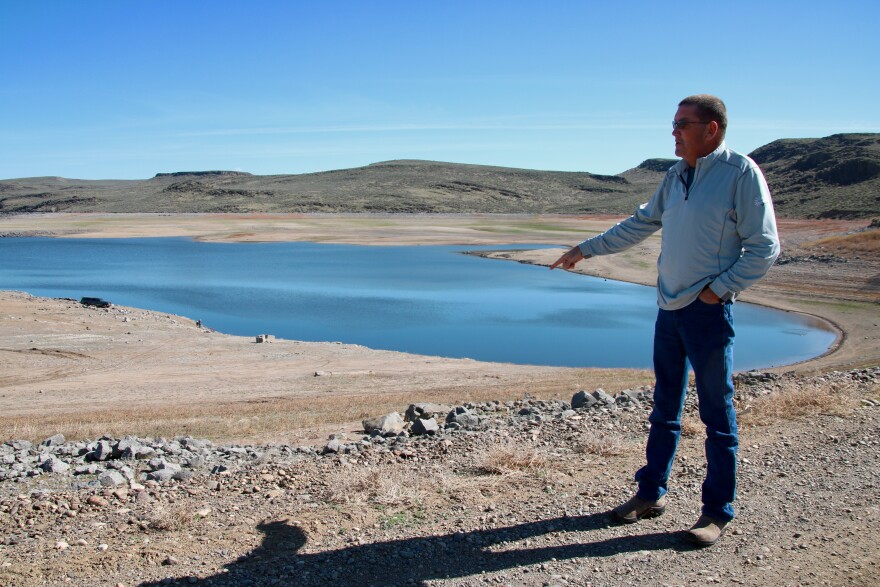About half of Idaho is experiencing some level of drought, and early irrigation shut-offs are predicted for several basins, especially in south central Idaho.

Last week, the Big Wood Canal Company opened the dam at Magic Reservoir, kicking off the irrigation season. The reservoir in southern Blaine County holds water that flows in from the Big Wood River after melting from snow in the Sawtooth Mountains. It supplies water to about 36,000 acres of farmland in the norther portion of the Magic Valley.
This year, Magic Reservoir is only about a quarter full. David Stephenson, the manager of the Big Wood Canal company, said that means farmers are looking at about 40 to 45 days of irrigation water before it runs out.
“We're keeping our fingers crossed, maybe the first of July, depending on what the temperature does and how the rest of the snowpack comes off,” Stephenson said.
In a normal season, irrigators might get water into late September.
The Wood River basin has been in a drought for more than a year. Monitoring sites near the epicenter, in the Pioneer Mountains, have measured record low precipitation, giving way to exceptionally low stream flows. The Big Wood River is flowing at about 16% of its normal rate.

Even before the slim precipitation this winter, the area was already hurting due to the ongoing drought. A dry summer and fall last year meant groundwater sources were depleted, as irrigators south of Bellevue pumped out of the aquifer, searching for any leftover moisture.
Now, the system needs to replenish so the groundwater can feed streams that end up in the reservoir.
“You have to soak that soil and then we have to replace [the water in] that aquifer, so there’s a lot of factors that lead to why the inflow into Magic has been so low the last year and a half,” Stephenson said.
Carl Pendleton, who farms in Shoshone, gets all his water from the reservoir, and said the outlook is dismal.
“I sold my cow herd last week, the first time I've been out of livestock in my lifetime,” he said. “That's the decisions we're making based on this amount of water.”
With the short water season, he expects getting one crop of alfalfa hay to supply to nearby dairies, when he normally gets three.

Part of the problem for surface water users like him in the Wood River Basin, he said, is unchecked groundwater pumping further north, which depletes the water before it gets to him. It’s especially evident during a drought, when there’s not enough water to go around.
Surface water users asked the Idaho Department of Water Resources to get involved last fall. After negotiations this spring, the department director could decide to curtail groundwater pumping south of Bellevue before the end of the irrigation season in order to fulfill the surface water users’ rights.
For now, Pendleton and other farmers that rely on water in the Wood River and Lost River basins are expecting some of the biggest shortages this irrigation season. But in its May outlook report, the federal Natural Resources Conservation Service said parts of the Snake River, and the Oakley and Salmon Falls reservoirs, will feel the effects of the drought too.
Find reporter Rachel Cohen on Twitter @racheld_cohen
Copyright 2021 Boise State Public Radio




